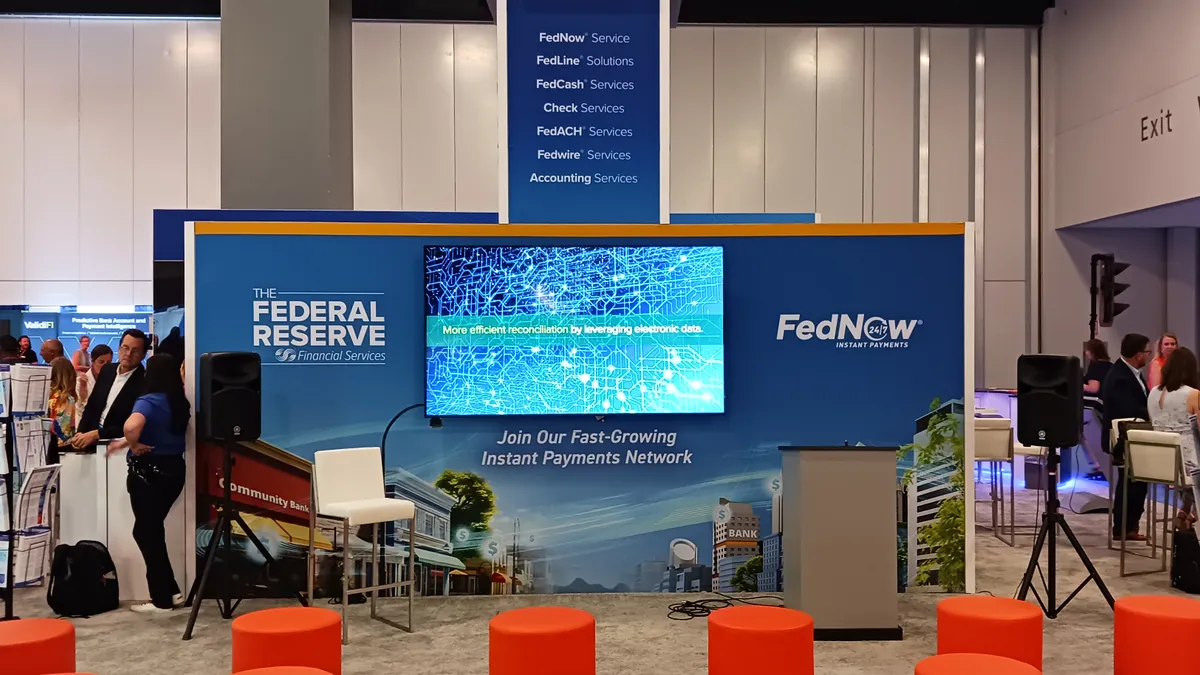The Federal Reserve isn’t putting a priority on making its new instant payments system FedNow interoperable with The Clearing House’s rival RTP network.
For the Fed, driving financial institution adoption of FedNow is top of mind, with interoperability an issue that will follow, Mark Gould, chief payments executive for Federal Reserve Financial Services, said at an industry conference this week.
“I think we should keep talking about interoperability, we should consider other changes we might want to make in the future, but really, step one is we've got to build the network,” Gould said Tuesday in speaking on a panel focused on the future of faster payments at the Nacha Smarter Faster Payments conference in Miami.
When he was asked why FedNow wasn’t interoperable with RTP from the start, Gould responded by suggesting they are already interoperable. “FedNow actually, in a routing sense, is, day one, interoperable with RTP,” he said. “We have some of the biggest banks in the country on both platforms. They today route payments to one system or the other.”
For the hundreds of people in the audience, that response led to some laughter after another panel member, Nacha CEO Jane Larimer, poked some fun at the statement. Also speaking on the panel was The Clearing House CEO David Watson, with Hyde Park Advisors consultant David Stewart moderating.
Since FedNow launched in July, it has rounded up about 700 banks and credit unions to adopt the service, and officials have acknowledged it will take time to create a network with more scale. There are nearly 10,000 U.S. financial institutions in the U.S.
For RTP, about 460 financial institutions had joined the network as of the end of last year since it started in 2017.
While some banks are connecting to both systems, that’s an expensive proposition for smaller financial institutions, and therefore could be a deterrent to adoption. To the extent that the real-time networks have less coverage, they may be less attractive for others to join.
Nonetheless, it appears that the July launch of FedNow gave a boost generally to real-time payments because adoption of RTP accelerated after its federal competitor began operating.
Given RTP and FedNow are the only two real-time payment systems in the U.S., there is concern among industry players about their ability to interact with each other, or, ultimately, with other systems.
Watson expressed more concern about interoperability than his Federal Reserve counterpart.
“My concern, as always, is: the longer we, as an industry, are not defining what type of interoperability, how we may get there, and when we may get there, even if it's not today, the bigger the risk,” he said during the panel. “I don't worry about the format. I worry about the warranties, the rules (and) the protections."
To be in tune on those items, Watson said it was important for the Fed and The Clearing House to continue to collaborate on building the real-time ecosystem. Despite their rivalry, FedNow and RTP officials have in the past discussed the development of their systems.
Gould said he shared Watson’s interest in continuing to lock arms on such issues, noting “it's really important for our teams to stay really connected and close and collaborate.”
Still, he also pointed to other issues he’s encountering when he’s in the field talking with professionals at financial institutions. Namely, he said he’s hearing concerns about how to mitigate fraud; how to install technology for instant payments in a cost-effective way; and how to manage liquidity outside of normal business hours.
“Those are the three main things that I hear about peoples’ reticence, if they are reticent, to adopt instant payments,” Gould said, noting “I didn't mention interoperability.”
To be successful with instant payments, Gould said he believes the endgame is about “getting the vast majority of financial institutions in the country connected to one or the other platforms so that we can then move forward.”











